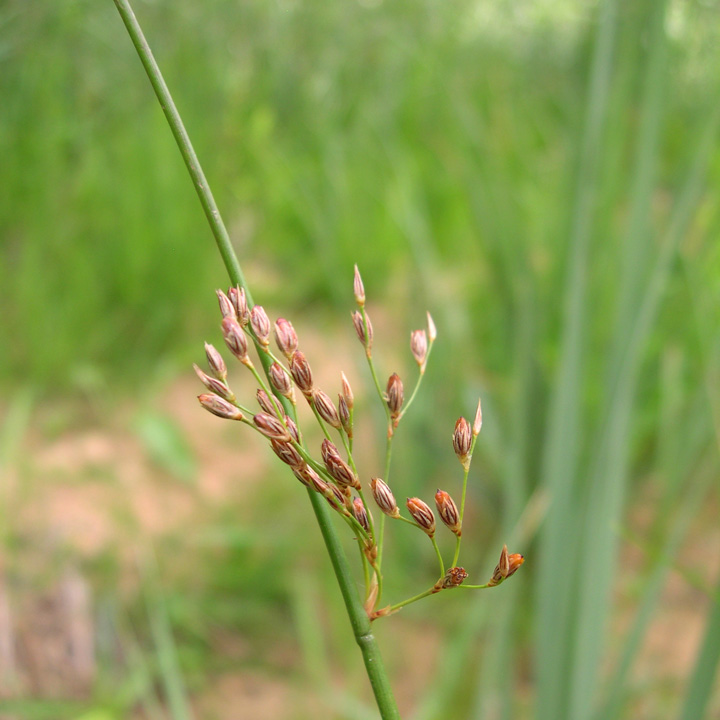- Home
- Search
- Images
- Datasets
- Sample Use
- How to Cite
- Additional Information
- About NEON
- NEON Data Portal
- ASU Biocollections
- About Symbiota
|
Family: Juncaceae |
Herbs, perennial or rarely annual, rhizomatous or cespitose. Culms round or flattened in cross section. Cataphylls often present at culm base. Leaves: sheaths open; blade flat, channeled, ensiform or terete, sometimes septate, margins involute. Inflorescences terminal or pseudoaxillary, monochasia or dichasia, usually with monochasial branches, cymes or 1--many heads in racemes or panicles; bracteoles 2 or absent. Flowers: tepals (4--)6 in 2 whorls; stamens (2--)3--6. Capsules 1-locular or 3-locular, septicidal. Seeds many, ellipsoid to ovoid, sometimes tailed. Tep narrow, lance-subulate to lance-ovate, dry, often firm and even sharp; stamens 6 or 3, opposite the sep when only 3; ovary and fr trilocular, subtrilocular (with incomplete partitions) or unilocular; seeds several to usually numerous (in any case more than 3), commonly ellipsoid or fusiform and minutely apiculate, sometimes with each end prolonged into a slender tail that may be longer than the body; smooth (1 of our spp. scabrous) herbs with usually simple stems and a few flat or terete, basal or cauline lvs, sometimes with bladeless sheaths only, and with a terminal, compact to loosely branched cyme of few-many fls, these solitary, paired, or often in glomerules; lf-sheaths open. 200, cosmop. Gleason, Henry A. & Cronquist, Arthur J. 1991. Manual of vascular plants of northeastern United States and adjacent Canada. lxxv + 910 pp. ©The New York Botanical Garden. All rights reserved. Used by permission. |


